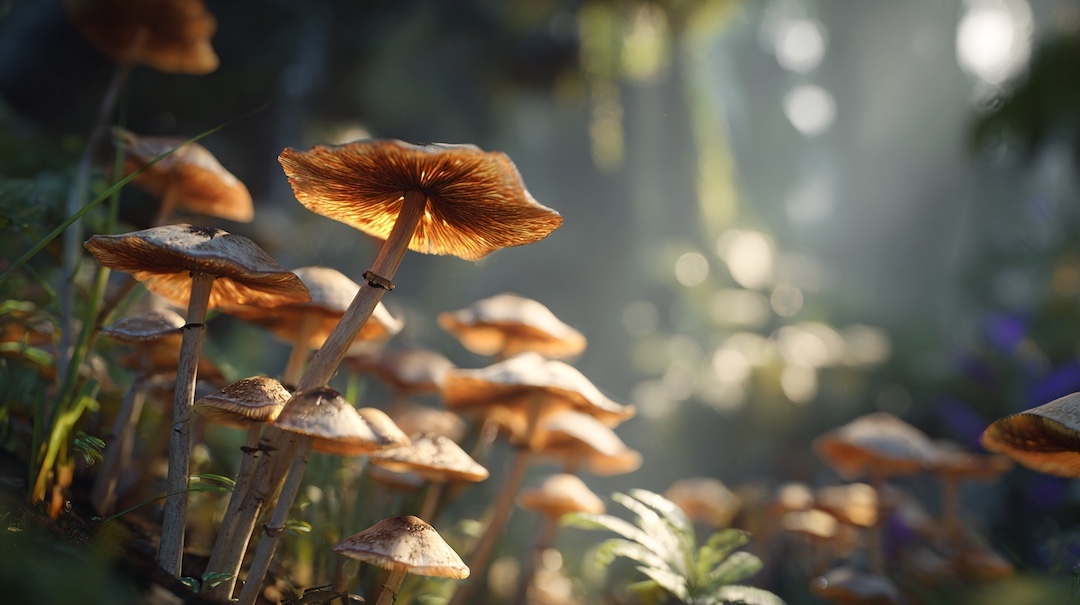
Introduction
In the rapidly growing field of psychedelics, one name stands out: Paul Stamets. A leading mycologist, Stamets has spent decades studying fungi and their transformative power. His latest book, Psilocybin Mushrooms in Their Natural Habitats: A Guide to the History, Identification, and Use of Psychoactive Fungi, is a monumental work that combines years of mycological research with spiritual exploration. If you're interested in the transformative potential of psilocybin mushrooms, this book offers an in-depth look at the science, culture, and significance of these magical fungi.
Whether you're a seasoned psychonaut, a mycology enthusiast, or someone curious about the impact of psychedelics on consciousness, this book will captivate you. It’s not just a field guide; it’s an invitation to understand mushrooms as both biological entities and spiritual agents of change. This review dives deep into why Psilocybin Mushrooms in Their Natural Habitats is essential reading for anyone interested in the natural world, consciousness, and the healing potential of psychedelic fungi.
About the Book
Paul Stamets, a renowned figure in the world of mycology, has authored several works on fungi, but Psilocybin Mushrooms in Their Natural Habitats is perhaps his most comprehensive and visually stunning book to date. With over 60 species of psilocybin mushrooms, this field guide provides an invaluable resource for identifying, understanding, and appreciating these powerful fungi.
The book is beautifully illustrated, featuring over 300 full-color photographs that capture the diversity and beauty of these mushrooms in their natural environments. But this isn’t just a collection of pretty pictures—it’s a scientifically rigorous exploration of the role these mushrooms play in ecosystems, their historical and cultural uses, and their emerging role in modern medicine.
Stamets delves into the intricate ecology of psilocybin mushrooms, offering insight into their environmental requirements, growth patterns, and symbiotic relationships with other organisms. He also provides a practical guide for identifying psilocybin mushrooms in the wild, complete with tips for distinguishing them from potentially toxic look-alikes. This is a book for both the curious layperson and the experienced mycologist, with detailed, accurate descriptions that make it an essential resource for anyone interested in these fascinating fungi.
Why This Book Matters
- An Exploration of Psilocybin’s Role in Human Consciousness
Psilocybin mushrooms have been used for millennia by indigenous cultures for spiritual and healing purposes. Their ability to induce altered states of consciousness has made them central to shamanic practices and therapeutic contexts alike. In recent years, scientific research has also uncovered their potential to treat mental health conditions like depression, anxiety, PTSD, and addiction. Stamets explores this potential in-depth, providing a historical context for psilocybin use while also looking toward the future of psychedelic therapy. - By exploring the cultural significance of psilocybin mushrooms, Stamets invites readers to consider how these mushrooms can facilitate a deeper connection to the natural world and our own consciousness. The book goes beyond scientific facts to explore the therapeutic and spiritual dimensions of psilocybin mushrooms, making it relevant not just for mycology enthusiasts, but also for those interested in personal transformation and healing.
- A Visual and Practical Guide
One of the standout features of this book is its visual richness. With over 300 full-color photographs, the book offers a stunning look at the different species of psilocybin mushrooms and their natural habitats. For those looking to identify these mushrooms in the wild, this is an invaluable resource. The photos are accompanied by detailed descriptions of each species, including information on their ecology, appearance, and unique features. The visual quality of the book makes it a perfect guide for both beginner and experienced foragers. - In addition to the visual appeal, the book is highly practical. Stamets includes valuable information on how to cultivate psilocybin mushrooms, offering guidance on the ethical considerations of mushroom cultivation, the ecological impact, and how to grow them responsibly. He also discusses the various methods of consumption and offers advice on how to ensure a safe and beneficial experience. Whether you’re looking to identify mushrooms in the wild or grow your own, this book provides everything you need to get started.
- Ecology Meets Spirituality
One of the most compelling aspects of Stamets’ work is his ability to bridge the gap between science and spirituality. In Psilocybin Mushrooms in Their Natural Habitats, he doesn’t just focus on the biology of these fungi; he also explores their deeper significance in the natural world and human consciousness. Stamets emphasizes the interconnectedness of all life, drawing parallels between the networks of mycelium that connect the forest floor and the ways in which humans are connected through shared experiences and consciousness. - The book’s exploration of fungi as ecological networks is especially relevant for readers interested in the spiritual dimension of psilocybin mushrooms. The mycelium networks that Stamets describes are more than just biological systems—they are metaphors for the interconnectedness of all living beings. This idea aligns perfectly with the themes of community, transformation, and healing that are central to spiritual and personal growth.
What’s Inside: Key Themes
- The Identification of Psilocybin Mushrooms
For those interested in identifying psilocybin mushrooms in the wild, this book provides a detailed, step-by-step guide. Stamets outlines the key features to look for when identifying different species of psilocybin mushrooms, including their size, color, shape, and habitat. He also provides clear instructions on how to distinguish these mushrooms from toxic look-alikes, ensuring that readers can forage safely and responsibly. - The History and Cultural Context of Psilocybin
The historical and cultural significance of psilocybin mushrooms is a major theme of the book. Stamets provides an in-depth look at the indigenous use of mushrooms in spiritual rituals and healing practices. He also explores the modern resurgence of psilocybin use in therapeutic contexts, highlighting the growing body of research on the medicinal benefits of these fungi. This section provides valuable context for understanding why psilocybin mushrooms have had such a profound impact on human consciousness. - Cultivation and Safety
For those interested in cultivating psilocybin mushrooms, Stamets offers practical advice on how to grow them ethically and sustainably. He provides detailed instructions on cultivation techniques, including information on how to create the right environment for mushroom growth and how to ensure the highest quality product. This section is essential for anyone looking to grow psilocybin mushrooms at home.
Personal Reflections
As someone deeply interested in both the scientific and spiritual aspects of psilocybin mushrooms, I found this book to be a fascinating and enriching read. Stamets’ ability to merge science and spirituality creates a unique perspective on these fungi that resonates deeply with me. The book has not only expanded my knowledge of mushrooms but also deepened my appreciation for the interconnectedness of all living things. It’s a powerful reminder that we are all part of a larger ecosystem, and that our consciousness is intricately linked to the natural world.
Conclusion
Psilocybin Mushrooms in Their Natural Habitats is an essential read for anyone interested in the transformative power of mushrooms. Paul Stamets has once again demonstrated his mastery of mycology and his ability to bridge the gap between science and spirituality. This book offers not only a detailed, practical guide to psilocybin mushrooms but also a deeper exploration of their cultural, ecological, and therapeutic significance.
For anyone seeking to understand psilocybin mushrooms in all their complexity—whether from a scientific, spiritual, or therapeutic perspective—this book is a must-have. It’s an invaluable resource that will inspire readers to explore the hidden world of fungi and to consider how these mushrooms might transform not only our consciousness but also our connection to the natural world.


















